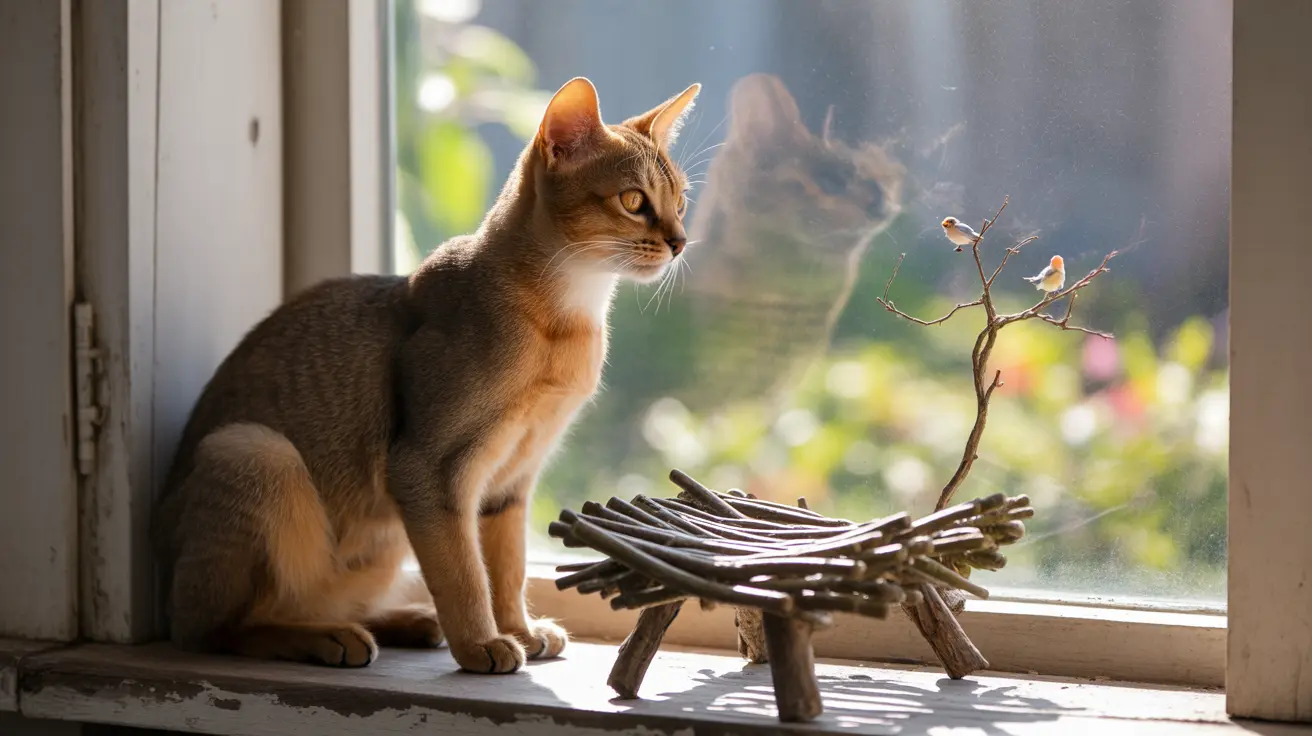Is your cat constantly meowing to go outside, driving you to your wit's end? This behavior is a common challenge for indoor cat owners, but with the right approach, you can help your feline friend adapt to indoor living while staying happy and stimulated. Let's explore effective strategies to address this persistent behavior and create a fulfilling indoor environment for your cat.
Understanding why cats meow to go outside is the first step in addressing this behavior. Cats are naturally curious creatures with strong instincts for exploration and hunting. When they see or smell the outdoor world, these instincts kick in, leading to persistent vocalization as they try to communicate their desires.
Understanding Why Cats Want to Go Outside
Cats are driven by several natural instincts that make the outdoors appealing. These include:
- Territorial instincts to patrol and mark their space
- Hunting drives that respond to birds and small wildlife
- Natural curiosity about new sights, sounds, and smells
- Social interests in other cats in the neighborhood
Additionally, if your cat was previously an outdoor cat, they may be especially persistent in their attempts to regain that freedom. Unaltered cats may also show increased interest in going outside due to mating instincts.
The Importance of Indoor Living
While it might seem cruel to keep your cat indoors when they're begging to go out, indoor living actually provides numerous benefits:
- Protection from vehicles and traffic accidents
- Prevention of exposure to diseases and parasites
- Safety from predators and other aggressive animals
- Longer life expectancy compared to outdoor cats
- Reduced risk of getting lost or stolen
Creating an Enriching Indoor Environment
One of the most effective ways to reduce outdoor-seeking behavior is to make the indoor environment more stimulating and engaging:
Physical Enrichment
- Install cat trees and climbing structures
- Set up window perches with bird-watching opportunities
- Provide multiple scratching posts
- Create hiding spots and exploration zones
Mental Stimulation
- Use food puzzles and treat-dispensing toys
- Rotate toys regularly to maintain novelty
- Schedule daily interactive play sessions
- Consider setting up a "catio" or enclosed outdoor space
Behavior Modification Techniques
To address the meowing behavior itself, consider these proven strategies:
Ignore Unwanted Behavior
When your cat meows to go outside, completely ignore the behavior. Any attention, even negative, can reinforce the meowing. Only give attention when your cat is quiet and engaged in appropriate activities.
Positive Reinforcement
Reward quiet behavior and indoor engagement with treats, praise, and attention. This helps your cat learn that staying calm indoors leads to good things.
Alternative Solutions
If your cat is particularly persistent, consider these compromise solutions:
- Harness training for supervised outdoor walks
- Installing a secure outdoor enclosure
- Creating window boxes for safe outdoor exposure
- Setting up indoor gardens with cat-safe plants
Frequently Asked Questions
Why does my cat keep meowing to go outside even when I don't open the door?
Cats often continue this behavior because it has worked in the past or because they're expressing natural instincts. The behavior may persist initially because cats don't immediately understand that the rules have changed.
How can I stop my cat from meowing nonstop to go outdoors without punishing it?
Focus on positive reinforcement of quiet behavior and ignore the meowing completely. Provide plenty of indoor enrichment and interactive play to redirect their energy and attention.
What indoor activities or toys can keep my cat entertained and reduce outdoor begging?
Interactive toys, food puzzles, climbing structures, and regular play sessions can help. Rotate toys regularly and create engaging spaces near windows for mental stimulation.
How do desensitization and counter-conditioning help with a cat's persistent meowing at the door?
These techniques help by gradually changing your cat's emotional response to doors and windows. By pairing these triggers with positive experiences instead of outdoor access, cats learn new, more appropriate behaviors.
Are there safe alternatives to letting my cat roam outside freely to satisfy its curiosity?
Yes, options include supervised harness walks, secure outdoor enclosures (catios), window perches with bird feeders nearby, and indoor gardens with cat-safe plants.
Conclusion
While it may take time and patience to modify your cat's outdoor-seeking behavior, consistency with these approaches will help create a content indoor cat. Remember that each cat is unique, so you may need to try different combinations of these strategies to find what works best for your pet.






